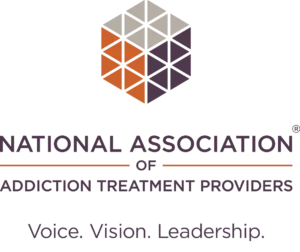
Treatment of Facet Arthropathy
Learn more about the benefits of treatment of facet arthropathy and how to get the treatment you need.
Table of Contents
Introduction
Facet arthropathy is a type of arthritis that impacts the joints of the spine. The treatment of facet arthropathy involves a combination of conservative and surgical approaches.
This includes traditional treatments such as:
- Physical therapy
- Medications
- Lifestyle modifications
Interventional treatments may include facet joint injections to provide targeted pain relief. Surgery can stabilize the spine and reduce pain when conservative measures fail.
The goal is to reduce pain, improve function, and enhance the patient’s quality of life.
Effective Options for the Treatment of Facet Arthropathy
The treatment of facet arthropathy aims to relieve symptoms and reduce inflammation.
Here are some of the most effective options for the treatment of facet arthropathy:
Physical Therapy
Physical therapy helps strengthen the muscles surrounding the facet joints and improve flexibility.
Physical therapists may use manual therapy and core stabilization exercises to improve mobility.
Medications
Nonsteroidal anti-inflammatory drugs (NSAIDs) such as ibuprofen can help reduce pain and inflammation.1
Sometimes, a short course of oral steroids can ease severe pain and inflammation.
Muscle relaxants or neuropathic pain medications like gabapentin can also help manage symptoms.
Facet Joint Injections
In cases where conservative measures fail, facet joint injections are the next step.2
These injections contain a combination of local anesthetic and corticosteroid medication. Facet joint injections provide pain relief and identify the joints causing the symptoms.
Radiofrequency Ablation (RFA)
RFA is a minimally invasive procedure. It uses heat from radio waves to disrupt the nerve signals that send pain from the facet joints. It can provide longer-lasting pain relief compared to facet joint injections.
Exercise and Lifestyle Modifications
Regular low-impact exercises like cycling can help improve strength and spine health. A healthy weight and good posture can help reduce symptoms of facet arthropathy.
Assistive Devices
Assistive devices such as braces can reduce pain and improve spinal alignment. This is especially necessary during activities that exacerbate symptoms.
Surgery
Surgery is the last resort when other conservative options for the treatment of facet arthropathy fail. Surgical options for facet arthropathy may include facet joint denervation or spinal fusion.
It’s essential to consult with a professional to determine the appropriate treatment options. They can conduct a physical examination and recommend a personalized treatment of facet arthropathy.
Do These Treatments Vary Depending on the Severity of the Condition?
Treatment of facet arthropathy can vary depending on the severity of the condition. The severity of the condition depends on the degree of joint degeneration.
Here’s how treatment options may vary based on severity:
Mild to Moderate Facet Arthropathy
- Physical therapy
- Medications
- Lifestyle modifications
Moderate to Severe Facet Arthropathy
Interventional approaches are next if conservative treatments do not provide relief. This could include facet joint injections to relieve pain.
Physicians use radiofrequency ablation (RFA) at this stage. It can provide lasting relief by disrupting the nerve signals that send pain.
Severe or Refractory Facet Arthropathy
Surgery is the next step if the condition is unresponsive to interventional treatments.
The specific surgical approach depends on various factors. This includes the location and extent of facet joint degeneration and spinal instability. Surgical options may consist of spinal fusion to stabilize the spine.
Treatment of Facet Arthropathy is Unique to You
It’s important to note that the treatment of facet arthropathy is highly individualized.
The healthcare professional will also consider other factors when recommending a treatment plan for you. This includes your medical history, preferences, and goals.
Risks and Benefits Associated with Treatment of Facet Arthropathy
Treatment of facet arthropathy carries varying risks and benefits.
Here are some potential risks and benefits associated with different treatments:
Physical Therapy
Below are the pros and cons of physical therapy as a treatment of facet arthropathy.
Benefits
Physical therapy can improve strength, flexibility, and posture. This reduces pain and improves overall function. It can also teach you techniques for pain management and prevention of injuries.
Risks
Physical therapy is generally safe when performed under the guidance of a professional. However, there is a risk of pain or injury if the exercises are incorrectly performed.
Medications
Below are the potential benefits and risks of using medications as a treatment of facet arthropathy.
Benefits
Medications such as NSAIDs can help reduce pain and inflammation, providing temporary relief. Muscle relaxants or neuropathic pain medications can help manage specific symptoms.
Risks
Medications may have side effects ranging from mild to severe. NSAIDs can cause:
- Stomach irritation
- Ulcers
- Cardiovascular effects
Muscle relaxants may cause drowsiness or dizziness. It’s important to use medications as prescribed and discuss risks with your physician.
This is necessary if you have other underlying health conditions or are taking other medications.
Facet Joint Injections
Below are the potential pros and cons of injections for treatment of facet arthropathy.
Benefits
Facet joint injections can provide targeted pain relief. They can help identify the joints causing the pain and provide temporary relief.
Risks
- Infection
- Bleeding
- Nerve damage
- An allergic reaction
Radiofrequency Ablation (RFA)
Below are the benefits and risks of using RFA for the treatment of facet arthropathy.
Benefits
RFA can relieve pain by disrupting the nerve signals that send pain from the facet joints. It can provide more sustained relief compared to facet joint injections.
Risks
- Infection
- Nerve damage
- Temporary discomfort
Surgery
Below are the potential benefits and risks of surgery as treatment of facet arthropathy.
Benefits
Surgery aims to stabilize the spine and relieve pain. It can provide long-term relief in some cases.
Risks
- Infection
- Bleeding
- Adverse reactions to anesthesia
Important Note About the Treatment of Facet Arthropathy
It’s important to remember that the risks and benefits of treatments vary.
Discussing these factors with your physician based on your circumstances is best. They can provide personalized recommendations and help you make informed decisions.
How Can Patients Weigh These Factors When Choosing Their Treatment?
Patients should consider potential benefits and risks when making decisions about their care.
Some tips on how patients can weigh these factors to make informed decisions will be detailed below.
Educate Yourself
Learn all about the different options for the treatment of facet arthropathy. Gather information from reputable sources and consult medical professionals.
Seek Multiple Opinions
It’s often helpful to seek opinions from various healthcare providers. Experts may provide different perspectives and treatment recommendations.
This will allow you to make a well-informed decision based on multiple viewpoints.
Discuss Your Specific Situation
Share your medical history, symptoms, and functional limitations with your healthcare provider. Provide details about your lifestyle and goals.
This information helps them assess the risks and benefits of each treatment option.
Evaluate Potential Outcomes
- How each treatment aligns with your goals
- The likelihood of success
- Duration of comfort
- Need for additional treatments
Weigh Risks Against Benefits
Evaluate the potential risks of each treatment for facet arthropathy against the potential benefits.
Consider the severity of your symptoms, the impact on your daily life, and risk tolerance.
Determine if you are comfortable with the risk associated with the particular treatment.
Consider Non-Invasive Options First
In most cases, non-invasive or conservative treatment of facet arthropathy is recommended as the initial approach.
These treatments often have lower risks compared to invasive procedures or surgery. It may be wise to start with these options and progress to more invasive treatments if necessary.
Seek Support and Advice
Discuss your concerns and treatment options with loved ones or support groups.
Seek their input and advice, as their perspectives can provide valuable insights. They can also offer emotional support during decision-making.
Follow Up with Your Healthcare Provider
Regularly communicate with your healthcare provider and clarify doubts before deciding. Ensure you understand the treatment plan and its expected outcomes.
Ultimately, the decision-making process should be collaborative between you and your healthcare provider.
How Can Patients Manage Chronic Pain While Undergoing Treatment?
Managing chronic pain while undergoing treatment of facet arthropathy can be challenging. Still, various strategies can help reduce pain and improve well-being.
Here are some approaches to consider:
Medications
Work with your physician to develop a medication plan addressing your pain needs. This may include over-the-counter pain relievers or prescription medications such as muscle relaxants.
Follow your healthcare provider’s instructions and communicate any concerns or side effects.
Physical Therapy
Engage in a structured physical therapy program to target your condition and needs. Physical therapists can guide you through exercises, stretches, and other therapeutic techniques.
This will help improve strength and flexibility, which reduces pain and enhance function.
Heat and Cold Therapy
Apply heat or cold to the affected area as your physician recommends.
Heat therapy, such as warm showers or heating pads, can help relax muscles and improve blood flow.
Cold therapy, such as ice packs, can help numb the area and reduce inflammation.
Relaxation Techniques
Explore relaxation techniques such as deep breathing exercises to reduce stress and pain. These practices can help relax the mind and body, promoting a sense of calm.
Sleep Hygiene
Focus on good sleep hygiene by establishing a regular sleep schedule. You can also create a comfortable sleep environment and practice relaxation before bed.3
Enough quality sleep can help improve pain tolerance and well-being.
Stress Management
Find healthy ways to manage stress, as stress can exacerbate pain. Engage in activities that help you relax and unwind.
This includes:
- Hobbies
- Leisure time in nature
- Yoga
- Tai chi
- Counseling
Mind-Body Therapies
Consider mind-body therapies such as acupuncture, chiropractic care, or massage therapy. These approaches may help alleviate pain, reduce muscle tension, and promote well-being.
Consult with trained practitioners and ensure their approach aligns with your treatment plan.
Support Network
Seek support from family or support groups who empathize with your chronic pain. Sharing your experiences with others can provide emotional support and valuable coping strategies.
Healthy Lifestyle
Adopting a healthy lifestyle can positively impact chronic pain management. Maintain a balanced diet and engage in regular physical activity within your limitations.
You can also manage your weight, avoid smoking, and limit alcohol consumption.
Communication with a Healthcare Provider
Communicate with your physician about your pain management strategies and treatment progress.
They can:
- Provide guidance
- Adjust treatment plans as necessary
- Refer you to specialists
Important Note About Pain Management
Remember, every individual’s experience with chronic pain is unique. Finding the most practical combination of strategies for your situation may take time.
It’s important to work with your healthcare provider to develop a personalized pain management plan.
How Long Does it Take to Recover From Facet Arthropathy?
- The severity of the condition
- The treatment approach
- Individual characteristics
Duration of Conservative Treatment Options
Conservative treatments are the first line of treatment of facet arthropathy. These treatments may provide relief and improve function over months.
Physical therapy programs, for example, often span several weeks or months.
Duration of Interventional Procedures
In cases where interventional procedures are recommended, the recovery time can vary.
Facet joint injections may provide temporary relief, typically lasting several weeks to months. RFA, which aims to provide longer-lasting pain relief, can have varying outcomes.
Some individuals experience relief for several months or even years.
Recovery Time for Surgical Procedures
The recovery time will depend on the surgical procedure if surgery is required. Recovery from spinal surgery involves periods of:
- Healing
- Rehabilitation
- Physical therapy
The recovery can range from several weeks to several months.
Important Note About the Recovery Process
It’s important to remember that facet arthropathy is a chronic condition. Management is focused on symptom control and functional improvement rather than a cure.
The recovery process is individualized, and the timeline varies. Following your physician’s recommendations can help optimize your recovery and overall outcome.

The Long-Term Complications of Facet Arthropathy
Facet arthropathy can lead to various long-term effects or complications if left untreated or not effectively managed.
Chronic Pain
Facet arthropathy is characterized by joint degeneration and inflammation. This leads to chronic pain in the affected area.
The pain can range from mild to severe and may be persistent or intermittent. Chronic pain can impact an individual’s quality of life without proper management.
Reduced Mobility and Flexibility
The degeneration of the facet joints leads to stiffness and limitations in mobility. This makes it challenging to perform everyday activities and engage in exercise.
Spinal Instability
In some cases, facet arthropathy can lead to spinal instability. Spinal instability occurs when the spine can’t maintain normal alignment and stability.
This instability can result in abnormal movement patterns. It can also contribute to additional spinal conditions, such as spinal stenosis.
Nerve Compression and Radiculopathy
As the facet joints degenerate and inflammation occurs, nerve compression is likely. This can lead to radiculopathy, characterized by pain radiating along the affected nerve.
For example, if nerves in the lumbar region are affected, it can cause symptoms in the lower back or legs.
Reduced Quality of Life
Chronic pain and limited mobility can significantly impact an individual’s quality of life. It may lead to difficulties with daily activities and social interactions.4
Secondary Conditions
Over time, facet arthropathy can contribute to the development of other spinal conditions. These conditions can further exacerbate pain and functional limitations.
Early diagnosis, appropriate treatment, and ongoing management can help mitigate the long-term effects. It can also improve outcomes for those with facet arthropathy.
The treatment of facet arthropathy can help reduce complications and optimize long-term well-being.
Treatment of Facet Arthropathy at J. Flowers Health Institute
Medicine constantly evolves, and new treatment options may become available over time.
Being aware of the different treatments allows you to stay informed about advancements in the field.
J. Flowers Health can explore emerging therapies that offer improved outcomes or reduced risks.
How J. Flowers Health Can Help
Facet arthropathy often requires a multimodal approach for effective management. Patients and healthcare providers can combine various treatments to provide comprehensive care.
J. Flowers Health employs the latest advancements and evidence-based practice to treat patients. We provide access to physicians versed in diagnosing and the treatment of facet arthropathy.
Contact J. Flowers Health Today
Reach out to J. Flowers Health Institute today for more information about the treatment of facet arthropathy.






